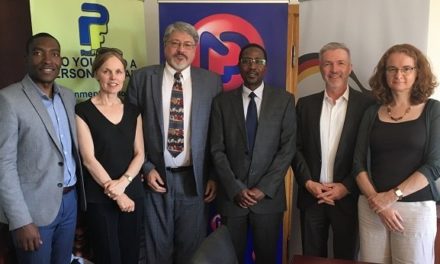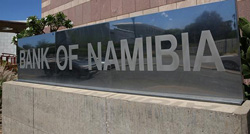
SADC Zambezi Environment Outlook 2015
Information provided by Southern African News Features
The Zambezi Environment Outlook 2015 was launched at the 7th SADC Multi-Stakeholder Water Dialogue held recently in Windhoek.
Under the broad theme “Towards strengthening basin-wide cooperation and regional integration”, the Outlook highlights the state and trends of key environmental resources, including land, freshwater, marine and coastal resources, forests and woodlands, and wildlife of a single ecosystem of the Zambezi Basin.
Namibia shares about 180 km river frontage on the Zambezi in the Caprivi Zipfel squeezed between Zambia, Zimbabwe and Botswana. The Zambezi River enters Namibian territory at a town called Wenela and exits at a point in the middle of the river, about one kilometre downstream from Mpalila Island.
The Environment Outlook shows that significant changes have occurred during the past 15 year since a comprehensive assessment of the basin was last published in 2000.
Among other changes, the Outlook notes that the basin is characterised by declining water quality, depletion of groundwater and a surge in invasive aquatic species. It notes changes in rainfall patterns expecting a decrease of 10% to 15% in rainfall by 2050.
Land and agriculture challenges noted in the Outlook include declining per capita land availability as a result of growing population, soil erosion and fertility decline, land degradation and soil salinization, as well as outbreaks of new strains of diseases. The Outlook also details issues and challenges in the other sectors such as tourism, energy and industrialisation.
Other notable changes include the expansion of urban areas, depletion of wetlands, reduction of forest cover and loss of key species.
Most of these changes are attributed to unsustainable human activities.
The report takes a retrospective and forward-looking analysis of issues, covering cross-sectoral elements relating to human settlements, energy and atmospheric dynamics. It, therefore, brings these changes into focus, presenting policy options for addressing them.
The Zambezi Environment Outlook 2015, produced by the Southern African Research and Documentation Centre (SARDC) through its I. Musokotwane Environment Resource Centre for Southern Africa (IMERCSA) for the Zambezi Watercourse Commission (ZAMCOM), is an update of the State of the Environment Zambezi Basin 2000 report.
The Outlook is seen as an important milestone for socio-economic development in the basin and the rest of southern Africa as it provides a monitoring tool for basin-wide and regional agreements, protocols and targets, which include the ZAMCOM Agreement, the Revised SADC Regional Indicative Strategic Development Plan (RISDP), the third Regional Strategic Action Plan for Integrated Water Resources Development and Management (RSAP III), the Revised SADC Protocol on Shared Watercourses, and the Protocol on Environmental Management for Sustainable Development.
The Revised RISDP, in particular, calls for regular environmental assessment, monitoring and reporting for the purpose of analysing regional trends.
The report will strengthen collaboration between policymakers and the public in a collective effort to effectively manage basin’s shared resources. The production of the Zambezi Environment Outlook is a long-term process, which is expected to continue in the future.
Production of the Outlook was made possible with support from cooperating partners led by the Government of Germany in delegated cooperation with the Governments of the UK (UKAid) and Australia (AusAid) managed by the German International Cooperation Agency (GIZ).
The Southern African Research and Documentation Centre is an independent regional knowledge resource centre which seeks to undertake research that informs development. Established in 1985 in Harare and Maputo, SARDC has a strong track record of experience and expertise in research, collecting, analysing, writing, documenting and disseminating knowledge from a regional perspective in a way that is accessible for different target audiences. SARDC has a 10-member regional Board chaired by Prof. Peter Katjavivi, MP, from Namibia, and the Vice Chair is Arlindo Lopes from Mozambique.











































